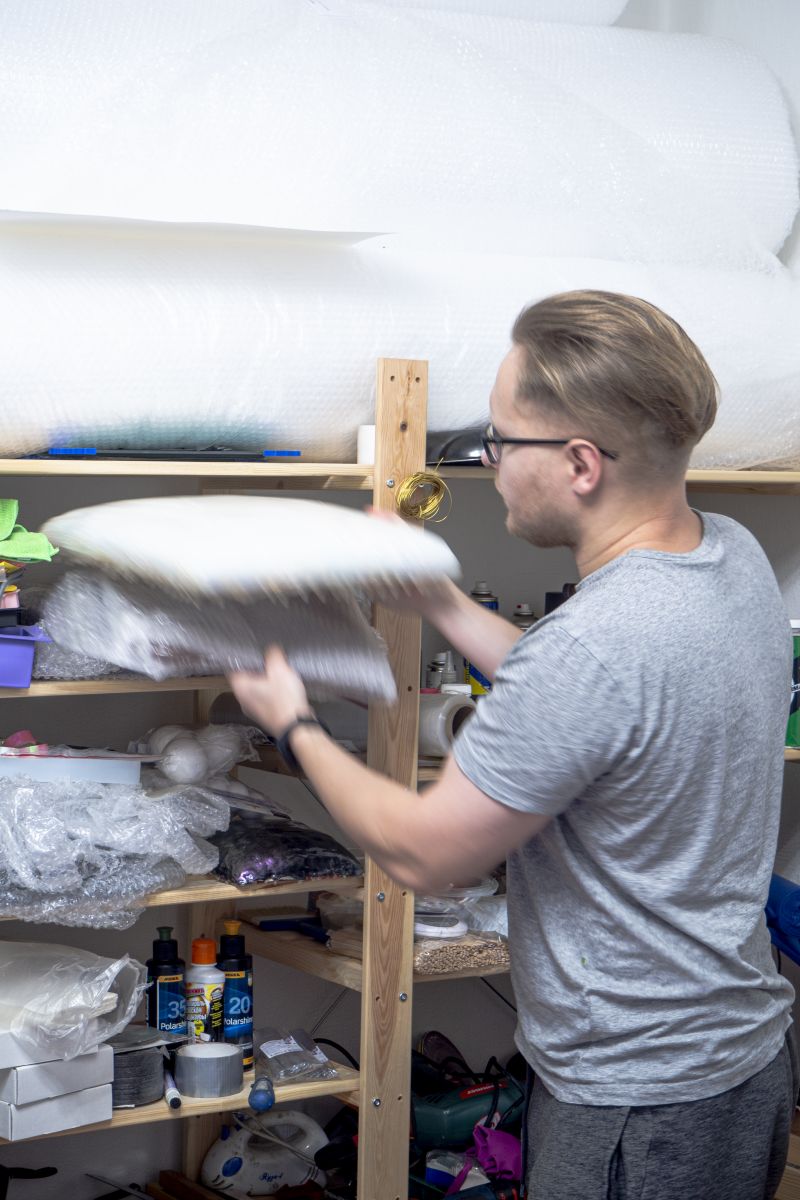
 +
+
December 1st, 2021
Has an architectural education influenced your work? And why did you choose to be an artist rather than an architect?
There are definitely influences, primarily technical - drawing, painting, sculpture, colouring and other subjects have all contributed, so I didn't embark on the artistic path from scratch. Working as an architect helped a lot, we had an interesting and educated team, I learned a lot with them.
In my opinion, an architect is also an artist, there are many examples in the art world where you do not work with a canvas but with space, and even on a colossal scale, which is a characteristic of architecture. I would say that I have chosen one of the ways of realising my ideas, "pictures", in my head. It can also be achieved within architecture or anything else, my current method suits me best.
Tell us about your paintings. You started out as a landscape painter and then you became interested in abstraction. What does this transition entail?
I actually started with "cracks", slowly trying my hand at painting. In general I now have three series that look quite different, even opposite, but I think that's normal, as it's strange to like only one genre of music or film. There is always diversity in a person, if you accept that creativity is a manifestation of a human, then such diversity is understandable. My landscape is also quite abstract; I try to capture mood and image in all my work focusing on the material itself, its texture and colour. The texture is probably most applicable to the earthy series, but there is an image there too - the image of the earth in the forest, the image of the geyser fields and black volcanic beaches. These images evoke moods, memories. That's a certain beauty of abstraction over figurative painting, you can set a broader framework for perception.
How do you see yourself developing further as an artist?
I have some ideas for developing existing series and exhibitions; I have to work on details, specific solutions and look for possibilities to realise them. I won't go into details, as these are still raw ideas. The process of development and realisation will always transform the idea. In more general terms I would like to create more complex exhibitions where there is not only work on the walls but a transformation of the space. I also wish to take part in recognised competitions and events. In an ideal and broader view of development the main thing for me is being able to do what interests me, and to be creatively and financially independent.
How much do the materials you work with influence your artistic practice?
Roughly comparable to the way the physical world affects our lives. Somewhere we adjust, somewhere the world adjusts. As for the series with earth, the impact is very direct, I collect materials from different places, dry them, sift them and make paintings, I use soil and moss from the forest to create an image of soil and moss, but I work with the material on my own terms, as I need to get the result I want.
Tell us about your regular day and what inspires your work?
Days vary, you can work in the studio for days, in general the work is created in stages, you have to collect the soil, dry it, sift it, order other things - stretchers, glue, brushes, etc. Then I proceed directly to making the work. I put on music or a lecture/book, put on a respirator and go. In general, there is a lot of work that is not directly related to creativity. A lot of time is spent on ordering materials, looking through competitions, deliveries, going to openings of other artists' shows and other miscellaneous things. There is a lot of dust in the studio after the earth paintings, so I still have to clean.
Most of all I am inspired by the desire to do something, to realise my 'pictures' from my head in the real world. It's more of a need, a necessity. I also love working with new materials, it's fun to try it out, it's also a challenge and an opportunity.
Do you think connecting with nature helps you to unleash your creativity?
We live in nature anyway, not in a vacuum, although a vacuum is also part of nature. I love beautiful landscape like Iceland - it's very epic and varied; different colours and textures. That kind of thing inspires me more than cities, to put it in those terms. And only the person himself can unleash his creative potential; many ideas and solutions come from the process, not from a walk in the woods. Knowledge, communication, information also helps; you can learn many new, interesting and useful things that may not be in an obvious way, not directly, but will affect your work and your ideas.
What are your favourite art books?
With pictures. Seriously. I generally take art in more visual way rather then theoretical, it can be a total abstraction, but there's either a chemistry between us, or not. If not, treatises with answers to all of humanity's questions as an explanation of the work won't change my attitude 90% of the time. That's why I like big books with good print.

